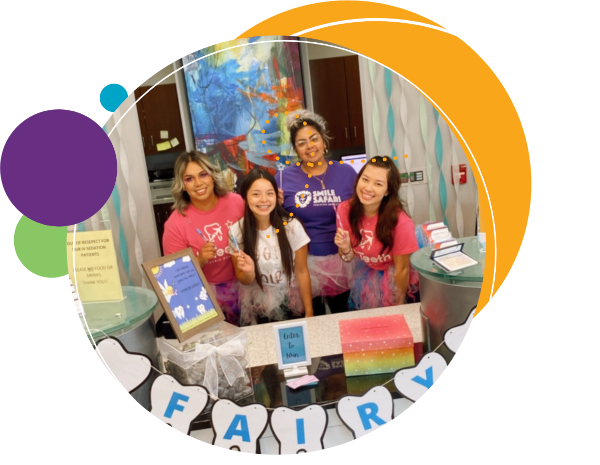Fluoride Treatments in Wichita & Derby KS



The enamel on our teeth is critical to avoiding cavities and tooth pain. But your child’s tooth enamel on their primary teeth isn’t as hard as that of secondary teeth. This means parents and children need to be on guard against tooth decay. One way to strengthen primary teeth enamel is treatment with fluoride.
Why Choose Us
- We have four talented pediatric dentists
- We have an amazing team who love small faces and big smiles
- Parents love the fun and positive experience for their kids

What Is Fluoride?
Fluoride is a compound containing fluorine and other minerals. It is found naturally in our bodies, soil, and natural water supplies like springs. It works by attracting other minerals that help strengthen tooth enamel. In the 1940s, scientists noted that people living in areas with naturally high fluoride levels in drinking water had less tooth decay.
The CDC notes that drinking fluoridated water reduces tooth decay by as much as 25 percent. Fluoride is so effective that the CDC listed fluoridation as one of the ten most significant public health achievements of the twentieth century.
Read Our
Reviews
Water Fluoridation
In the United States, more than 200 million people ingest fluoride from tap water and things made with tap water. Companies and suppliers add fluoride to their water supply. It doesn’t take much. The United States Public Health Service (PHS) recommends a minimum level of 0.7 mg per liter and a maximum of 1.2 mg per liter. The Environmental Protection Agency set the maximum at 4 mg per liter.
Teeth enamel is hard but not so hard that nothing gets through. Fluoride and other enamel-friendly minerals keep tooth decay at bay. Sometimes, a child’s body needs more fluoride or other enamel-building minerals, especially if they don’t brush and floss regularly. In these cases, children should undergo a fluoride treatment.
The enemy is bacterial plaque. It removes minerals from tooth enamel and weakens the enamel barriers. Eating and drinking influence how much bacterial plaque builds up on teeth. If your child isn’t brushing and flossing daily, there’s the potential to develop hard gray tartar, a substance that’s harder to remove than plaque.


Dr. Stephen P. Moore

Dr. David J. Brown

Dr. Trey K. Anderson

Dr. Amrita Khemka

Dr. Kristal Raya

Dr. Kelsey Martinez

-Kristina G.






